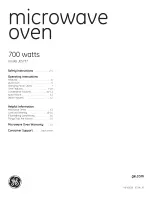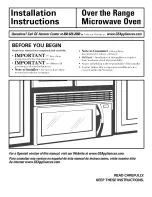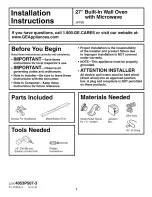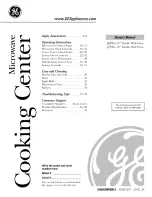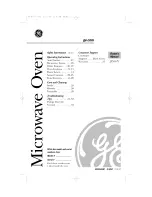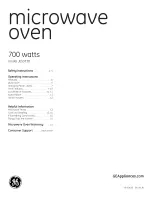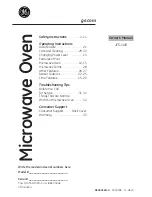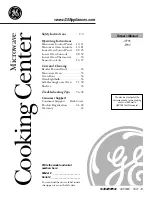
Instructions for the user
46
7.1
Cooking advice and instructions
7.1.1
General advice
In general, it is not possible to shorten the cooking times by increasing the
temperature (the food could be well-cooked on the outside and undercooked on
the inside).
While cooking desserts or vegetables, excessive condensation may form on the
glass. In order to avoid this, open the door very carefully a couple of times while
cooking.
7.1.2
Advice for cooking meat
Cooking times, especially for meat, vary according to the thickness and quality
of the food and to consumer taste.
We recommend using a meat thermometer for meat when roasting it.
Alternatively, simply press on the roast with a spoon: if it is hard, it is ready; if
not, it needs another few minutes cooking.
7.1.3
Advice for cooking desserts and biscuits
• Use dark metal moulds for desserts: they help to absorb the heat better.
• The temperature and the cooking duration depend on the quality and
consistency of the dough.
• Check whether the dessert is cooked right through: at the end of the cooking
time, put a toothpick into the highest point of the dessert. If the dough does
not stick to the toothpick, the dessert is cooked.
• If the dessert collapses when it comes out of the oven, on the next occasion
reduce the set temperature by about 10°C, selecting a longer cooking time if
necessary.
7.1.4
Advice for defrosting and proving
• We recommend positioning frozen foods in a lidless container on the first
runner of the oven.
• The food must be defrosted without its wrapping.
• Lay out the foodstuffs to be defrosted evenly, not overlapping.
• When defrosting meat, we recommend using a rack positioned on the
second runner with the food on it and a tray positioned on the first runner. In
this way, the liquid from the defrosting food drains away from the food.
• The most delicate parts can be covered with aluminium foil.
• For successful proving, a container of water should be placed in the bottom
of the oven.






























